
Recent Blog Posts
April 18, 2014
5 Must-Read Women’s Fitness Blogs
Several months ago I wrote a blog post called A Dozen Must-Read Fitness Blogs. The post highlighted a number of blogs that I felt consistently put out great content on exercise and sports nutrition.
Recently, someone commented on the post asking why I didn’t include any blogs written by women. Hadn’t considered this point, but after giving it some thought I realized she was right! It was an oversight that needed to be addressed. Not that gender should make a difference when reading a blog — it’s the quality of course that counts regardless of who writes the post — but it’s nevertheless necessary to give credit where credit is due. Importantly, resistance training for women is an area that is still under-appreciated; the more we can do to make gals realize they need to embrace the iron, the better.
So I’m dedicating this post to feature some truly terrific female fitness pros and their respective blogs. When it comes to fitness, these gals get it. They’re not out there preaching that women should do endless reps with pink dumbbells and follow starvation diets. Quite the opposite, actually. They each have their own niche, but their philosophies are grounded in science and supplemented with a whole lot of good-old-fashioned in-the-trenches experience.
So without further ado, and in no particular, here are five must-read fitness blogs written by women for women (although most guys can certainly pick up a few pointers here as well). As with my previous post, this is by no means a comprehensive list. There are certainly a large number of other female bloggers that I’ve no doubt excluded and will look to cover in a follow-up blog.
• Jen Sinkler: Jen is a former rugby player turned fitness editor. She recently gave up her gig as the head honcho at Experience Life magazine to freelance at a number of the major women’s fitness mags and train clients one-on-one. Her blog is decidedly no-fluff. She focuses primarily on the performance-based aspects of lifting as opposed to training for aesthetics (although the two are not mutually exclusive). Articles are eclectic and range from areas as diverse as kettlebells to cycle circuits to biofeedback. Lots of good stuff.
• Molly Galbraith: Besides being one of the most down-to-earth individuals you’d ever want to meet, Molly is a true fitness pro. She was co-owner of a gym with Jim Laird where she specialized in working with female clients before recently stepping away to pursue online coaching and focus on maintaining her blog. Although the blog delves into a number of fitness topics, Molly’s focus is on helping women with body image issues. Her blogs are often very personal as she writes about her own struggles with body image and her journey to self-satisfaction through fitness. Moly is also co-founder of another excellent female-oriented blog, Girls Gone Strong that should be bookmarked for reading.
• Lift Like A Girl: This blog is written by Nia Shanks. Nia has a degree in exercise science and her in-depth knowledge of resistance exercise shows in her writings. Nia’s focus is on time-efficient workouts, particularly involving strength-based heavy-lifting routines. She covers aspects related to programming, technique and mindset. Some good nutritional articles as well. Lots of interesting reading. Make sure to watch her moonwalk!
• Flawless Fitness: This is Melody Schoenfeld’s blog. Full disclosure: Melody is in fact my sister. But before you claim nepotism, give her blog a read. Melody got her start as a trainer working in my gym back in the 90’s, then moved out to California to open her own facility. She tips the scales about 100 pounds but can out-lift a lot of guys (she holds several state powerlifting records). Her blog covers a wide range of topics. She’s big on kettlebells and holds certs as a master KB instructor. But she also gets into some cool alternative tools such as Indian clubs and even a medieval fighting implement called a mace.
• Stumptuous.com: This is Krista Scott Dixon’s blog. Krista can stake claim to being the original hard-core female fitness blogger and no doubt inspired many of the women on this list. She was churning out cutting-edge fitness articles around the turn of the century, telling women they should be squatting instead of performing a gazillion leg lifts. Her no-nonsense tone is refreshing, and she’s got a great sense of humor that makes her posts fun to read. Unfortunately, it seems Krista doesn’t post much anymore. The good news is that there is a ton of content on her blog that will keep you busy reading for weeks.
January 15, 2014
A Dozen Must-Read Fitness Blogs
There’s certainly no shortage of fitness blogs on the internet. Everyone who’s ever lifted a weight seems to have one. Problem is finding those that have solid info backed by research and experience.
In an effort to separate the gold from the silt, I’ve compiled a list of fitness blogs that IMHO consistently deliver the goods. They provide info you can trust. No hype. No bro-science. Just quality fitness content.
A few caveats before proceeding. First off, the list is in no particular order — placings are not indicative of one blog being better than another. Rather, the blogs are all inherently different and unique, and therefore provide complementary reading. In addition, the list is not intended to be comprehensive. There are certainly a lot of other excellent blogs that are not mentioned here. I had to keep the number of entries manageable so I limited it to a dozen (actually a baker’s dozen, but who’s counting :)).
With that out of the way, on with list.
Bret Contreras: If you could only read one fitness blog, this is the one I’d recommend. No one puts out more quality content than Bret. It is really amazing how many posts he pens, but even more amazing that the info he provides is so consistently cutting-edge. There is a focus on glute training (he is “The Glute Guy” after all), but there’s also tons of posts on pretty much every aspect of exercise. Importantly, the info is always presented in a balanced fashion; there’s never an agenda furthered.
Weightology is a blog written by James Krieger. I’ve known James for years and collaborated with him on a number of research-based projects. Hands down he’s one of the brightest minds in the fitness industry. Much of his blog is pay-to-view, but there also is a good amount of free content as well. When James posts, you can bet the info is scientifically sound.
Alan Aragon: I’ve said it before and I’ll say it again, no one has a better grasp of the practical application of nutrition to exercise than Alan. As would be expected, his blog is great…except for one little thing: He’s too busy dominating the nutritional stratosphere to write many posts. Fortunately, when he does decide to post it’s invariably a homerun. For Exhibit A, check out this now-legendary rebuke of fructose alarmism. Side note: The comments section is just as compelling as the article with a guest appearance by Dr. Lustig himself!
Eric Cressey: In case you don’t know, Eric Cressey is one of the most sought-after strength coaches for baseball conditioning. Players come from all over the country to train at his facility, Cressey Performance, including many top pros. His blog includes baseball-related contditioning info but focuses more on general S&C info, including lots of discussion about mobility and stability drills. Best of all, he posts numerous teaching videos that demonstrate concepts discussed in the articles. Always a great read.
Born Fitness: This blog is written by Adam Bornstein, former editor for Men’s Health and Livestrong. Adam has keen insight into what fitness topics people want to read, and an innate ability to convey the info in an interesting fashion. He’s knowledgeable about exercise, and astute enough to consult with experts when needed. Bonus points for having one of the most well-designed sites as well.
Exercise Biology: This blog is written by Anoop Balachandran. Anoop has a terrific grasp of the exercise literature (he’s currently pursuing his PhD in ex phys), and understands the practical implications for the general public. The content is always evidence-based, with lots of discussion about the application of research into practice. When you fnish reading the blog, scan through the forums; they often contain high-level discussions as well.
Lou Schuler: Lou is perhaps the best pure fitness writer I’ve encountered. He has a knack for being able to present technical topics in a manner that is easily-digested, and usually does so in a humorous way. Similar to Adam Bornstein, Lou was a former editor at Men’s Health and other fitness mags. As such, he always seems to be at the forefront of what people want to know fitness-wise.
Nick Tuminello: Nick is another guy who amazes me with the number of articles he writes. He’s truly a writing machine. Nick posts on a variety of topics and isn’t afraid to tackle some controversial issues. He’s got a good sense of research and provides innovative training strategies based on a combinatoin of evidence and experience.
Burn the Fat, Feed the Muscle: This blog is written by Tom Venuto. As the name implies, the blog primarily focuses on how to optimize body composition. Tom is a former bodybuilder and his approach borrows from many of the popular bodybuilding principles. But Tom isn’t just some bro. He’s well-versed in exercise science and dishes out advice in an evidence-based fashion. You won’t read about “peaking the biceps” or “carving out an inner chest.” You will read about time-tested training practicies that will help you attain a better physique.
Dean Somerset: Dean has more of a post-rehab focus than the others on this list. Accordingly, you can get a fresh take on topics that aren’t well covered elsewhere. While much of the posts delve into the medical fitness arena, there also are some good general training articles as well.
Body Recomposition: This is Lyle McDonald’s blog. Lyle is probably best known for writing about ketogenic diets, but he is highly knowledgeable in many areas of nutrition. Over the years he’s been an innovator in the field, using research to develop strategies for optimizing fat loss. Lots of evidence-based info about fitness on his site, particularly pertaining to diet.
Robertson Training Systems: This blog is penned by Mike Robertson, a popular strength coach based out of Indianapolis. Mike mostly focuses on performance-based topics with an emphasis on exercise technique. That said, there’s a little bit of something for everyone here, including some interesting interviews with up-and-coming fitness pros.
Tony Gentilcore: Tony is a partner with Eric Cressey in Cressey Performance. His blog covers serious training topics, but generally does so in a humorous manner. The topics are fairly diverse and the supporting videos he posts are first rate. What sets Tony apart is his fluent and engaging writing style that continually holds your interest. Always entertaining.
January 12, 2014
My Journey to a Doctoral Degree
My journey began a little more than 3 years ago, but in actuality it had been in the works for a lot longer. The idea of obtaining a PhD in exercise science came about while I was pursuing my Master’s degree in 2008. By the time I started working on my Master’s thesis, the thought was in the forefront of my mind; upon graduation, it had become my ultimate goal.
One little problem. I had a thriving career and, being in my 40s, was not about to chuck everything and become a full-time student. It simply wasn’t an option.
My alternatives were very limited. There simply weren’t many programs that provided a platform to getting a doctorate while you worked. Even fewer had programs that were within my area of interest. Yet I was committed to finding a viable solution.
After months of investigation, I learned that Rocky Mountain University in Provo, Utah had a hybrid PhD program that combined online and on-site coursework, thereby allowing the ability to go to school while working full-time. Better yet, Dr. Brent Alvar was the program director of the university. I was very familiar with Dr. Alvar’s work. He did the pioneering research on the dose-response relationship of resistance training, and was the mentor to many leading researchers during his tenure at Arizona State University.
For those who don’t know, the most important criteria in choosing a doctoral program is the person in charge of the program. This is who will be mentoring you throughout your studies. If the relationship doesn’t work or if your interests are out of sync, you’re basically wasting your time.
I spoke with Dr. Alvar by phone. We hit it off immediately. He told me about the coursework. I told him about my situation. He said it would be tough but doable. He said I was exactly the type of student he enjoyed mentoring. That was all I needed to hear. I applied the next day. A month later I was accepted into the program.
I began studies at RMU in March of 2011. For the next two-and-half years I had little time to myself. Between work and school, my social life was virtually nonexistent. Coursework was intense. We had 4 to 5 classes per semester working on a trimester schedule — i.e. there was almost no break between semesters. In addition to writing multiple research-based papers, each course required weekly online forum discussions throughout the term. Most courses had comprehensive tests as well. Once every semester I had to travel to Provo for a week of intensive in-class study. Classes met Monday-Friday from 8:30 am to 5:30 pm with an hour for lunch. Those were some loooong days!
The majority of my coursework was centered around research. I took three biostats classes, two classes in research methods, two classes in epidemiology, and other related courswork such as dissertation proposal writing and grant writing. Oh yeah, and there were the core classes as well. Our initial class had 15 cohorts; by the end of the program, only 9 of us remained. Suffice to say, the program was intense.
There also were four “independent project” courses. These courses afforded the ability to work on research by writing papers specific to our area of interest. I used the opportunity to write four review articles that were ultimately published in major peer-reviewed journals. I also was able to integrate the material into my dissertation review of literature. Without question, these classes were highly productive.
I finished up coursework in July of last year. I immediately took (and passed) my comprehensive exams so I could begin data collection for my dissertation study. The study was something I’d been planning since my Master’s class in research methods. I actually wrote up a proposal in that class which was quite similar to the study I ultimately carried out. The study itself examined muscular adaptations between bodybuilding- versus powerlifting-type training in experienced lifters. There were several novel findings from the study that will certainly add to our understanding on the topic, with important implications for program design. The manuscript is currently in journal review. I’ll be discussing the results at length upon publciation.
This past Friday I defended my doctoral dissertation. The day seemed as if it would never come. The defense was held in Indianapolis at the NSCA Coaches Conference. My dissertation chair, Dr. Alvar, was present in the room. My other committee members, Dr. Nicholas Ratamess and Dr. Mark Peterson, were beamed in by the wonders of online technology. I gave a half-hour powerpoint presentation. I was then grilled for about 45 minutes on a wide array of topics about my study and its implications for future research.
After answering all questions, I was asked to step out of the room. I probably waited about 10 minutes but it felt like an hour. Finally Dr. Alvar opened the door and uttered the words, “Congratulations Dr. Schoenfeld…”
It was one of the most satisfying moments of my life. Just a huge feeling of accomplishment. So much work. So much sacrifice. All coming to fruition in the form of a doctoral degree — the ultimate testament to being a content expert in your area of study. My only regret was that my father was not around to share in the experience — he instilled the scientific method in me from the time I was young and would have probably been even happier than me with the achievement. Hopefully he’s watching somewhere from above.
So what’s next? I will continue exploring a wide variety of educational pursuits. My life’s work is to make a difference in the fitness realm, to have a positive impact on people’s lives. We have a limited time on earth; it’s imperative that we use our time wisely.
In addition to teaching at the college level, I’m currently involved in numerous research studies that will shed light on important topics in exercise science and sports nutrition. I’ll also be speaking across the country and around the world over the coming months, lecturing on how to apply the science of training and nutrition into practice. I’ll still work with a select group of individual clients for one-on-one training consults as well as serving in an advisor capacity to various corporations. And of course I’ll be involved in writing more articles and books targeted to fitness professionals and consumers, detailing the best practices to optimize results.
I feel very blessed to be an educator and make an impact. I look forward sharing the knowledge I’ve gained. I’ll be doing so right here on this blog. Stay tuned.
Cheers!
Brad
December 28, 2013
This and That…
As 2013 comes to an end, here are some random thoughts and goings on that I’d like to share:
• First and foremost, I’ll be defending my doctoral dissertation in a matter of weeks. The defense will mark the culmination of years of study and research. My dissertation paper titled, “Effects of different volume-equated resistance training loading strategies on muscular adaptations in well-trained men,” was submitted last week for peer-review. I’ll have lots more to say about the results in short order. Looking forward to completing this phase of my education and excited to enter the next phase in my never-ending quest for knowledge and enlightenment in exercise science.
• I was disappointed, although not entirely surprised, that Dr. John Ivy did not respond to my offer to publish a rebuttal to my critique of his recent review on nutrient timing. As discussed in my critique, the review by Dr. Ivy was a classic case of cherry-picking research to support a closely-held opinion while conveniently neglecting to mention compelling evidence to the contrary. This type of article would be expected in the muscle rags, not in a peer-reviewed journal. If Dr. Ivy truly believes the evidence supports his position, I challenge him to debate me on the topic. He can pick the time and place. Let’s put all the info out there and allow the public to decide. It’s how science is supposed to work.
• Speaking of nutrient timing, I was interviewed by Carl Lanore on Super Human Radio about my recent paper, The effect of protein timing on muscle strength and hypertrophy: a meta-analysis. Carl always does a superb job asking the right questions and allowing leeway for scientific discussion. Some very important info discussed here, not just about nutrient timing, but also as to how to put research into proper perspective for practical decision-making. Here is a link to the interview.
• I’ve had several peer-reviewed papers either published or accepted for publication within the past few weeks. My paper co-authored with Bret Contreras titled The Muscle Pump: Potential Mechanisms and Applications for Enhancing Hypertrophic Adaptations was just published ahead-of-print in the Strength and Conditioning Journal. This article discusses how cell swelling associated with resistance exercise can provide an anabolic stimulus that potentially increases muscle growth. On a related topic, I just received acceptance from the European Journal of Sports Science on a study that I collaborated on with researchers from Brazil showing that bodybuilding-type resistance exercise results in a long-term increase in cellular hydration. This has important potential implications for muscle growth. Finally, another article I co-authored with Bret, Is Postexercise Muscle Soreness a Valid Indicator of Muscular Adaptations? has been made available to be viewed for free by the NSCA. Normally articles published in the Strength and Conditioning Journal are only viewable at no charge for members. I’m not sure how much longer the opportunity will last, so if you haven’t read the article as yet I’d encourage you to download it now.
• Last but not least, here is Episode 7 of the B&B webcast covering evidence-based fitness prescription. Contrary to popular belief, evidence-based practice is not simply a matter of knowing the research; it involves synthesizing the current body of evidence and then combining this knowledge with personal experience and taking the needs and abilities of the individual into account. In this episode we delve into the topic in depth and discuss how to blend the science and art of fitness to optimize training programs.
That’s all for now. 2013 has been a great year, but 2014 should be even better. Look forward to making a meaningful contribution to our understanding of the science and art of fitness and nutrition, and of course sharing that knowledge with you all.
Stay well and stay fit!
Brad
December 4, 2013
Interview with Tom Venuto
Tom Venuto is one of the good guys in the fitness field.
For those who don’t know of his work, Tom is a former natural bodybuilder who turned a passion for getting fit into a passion to help others optimize their fitness goals. He is founder of the popular blog, Burn the Fat, Feed the Muscle and is author of of a number of succesful books. What I admire most about Tom is his balanced, evidence-based approach to exercise and nutrition (as you will know doubt see in the ensuing interview). He is a student of the science as well as an in-the-trenches practitioner. This combination of experience and insight makes him one of the most sought-after practitioners in the country.
I’ve known Tom personally for many years and I’m pleased to have interviewed him about his new book, Burn the Fat, Feed the Muscle: Transform Your Body Forever Using the Secrets of the Leanest People in the World, which will be released next week.
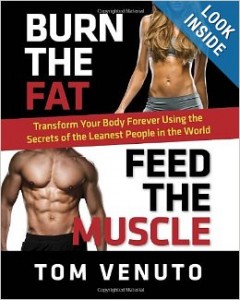
BJS: Thanks so much for consenting to do this interview Tom. I’ve always been impressed with your down-to-earth, scientific approach to fitness. For those not aware of your accomplishments, can you give a brief rundown on your background?
Thank you for the opportunity Brad. I’ve been training for over 30 years nonstop. I got my undergrad degree in exercise science and was a competitive bodybuilder and personal trainer for almost 15 years. Today my full time job is coaching people online through our Burn the Fat community and I’m also fitness writer. I blog at Burn the Fat Blog.com and I’m the author of two books on fat loss including The Body Fat Solution and Burn the Fat, Feed the Muscle.
BJS: Your new book, “Burn the Fat, Feed the Muscle,” was previously published as an e-book. What is different about this book from the previous edition?
The original ebook was first published in 2003. The theme of the new version is the same – the book teaches regular people how to use the nutrition, training and psychology strategies of bodybuilders and other physique athletes – to achieve their own goals. In a decade, a lot of new research emerges and if you stay on top of your game, you grow and evolve as a coach and communicator. I believe it’s important to share the most up to date information and best practices with your readers, in the simplest terms possible to help the most people. So the book has been re-organized, revised and updated with 25% new material including new chapters and a new workout program.
The biggest change I’ve seen over the last decade, which is reflected in what I write, is not a single new diet breakthrough or the discovery of one superior training technique – it’s quite the opposite – it’s how we’ve learned that there is more than one way to skin a cat. Does low carb work? Yes. Does high carb work? Yes. Does 6 meals work? Yes. Does 3 meals work? Yes. Do plant based diets work? Yes. Do meat based diets work? Yes. Does a full body workout work? Yes. Does a body part split routine work? Yes. And yet, this is the hardest thing for the dichotomously-thinking human brain to grasp because it seems contradictory. Fueled by marketing, personal ideologies and the guru culture, most people want to keep believing there’s only one true way. But it doesn’t exist. We need to focus more on the vital few fundamentals that apply to everyone, worry less about the trivial stuff and craft a personalized plan we can live with.
In that spirit, the book stays focused on the same principles and it’s still structured and by the numbers, but it’s more flexible than ever before, allowing for the kind of customization that accommodates an individual’s lifestyle and preferences. It’s also accessible to people who aren’t bodybuilders or scientists. More than ever, Burn the Fat, Feed the Muscle looks at both what the research says and what the real world says – or as you have eloquently said – it’s about the art and the science.
BJS: You discuss how exercise and nutritional routines should be customized based on body type. Can you explain why?
I would describe my philosophy as being more about customization to accommodate everything unique about each individual than about body type in a genotypic classification system sense. Bodybuilders have been fascinated with body types for years – you see somatotyping mentioned in almost all the classic muscle building books – and I do explain those body types in my book too, but I then explain the limitations of the classic Sheldon system, and go beyond it by describing the new phenotypic view about somatotypes.
Mainly, it’s a simple matter of “know thyself.” Know your tendencies biologically and behaviorally, know your goals, know the lifestyle you want to live, and then that helps you customize your workouts and nutrition.
Some of the explanations for body types are so simple, they’re usually overlooked, but becoming conscious of them can be very helpful. For example, what is an ectomorph really, beyond a certain frame and bone structure? Most people think it’s a guy who inherited a really fast metabolism so he burns everything off and never gets fat. “Lucky him” the endmorphs say. But most research says that inter-individual variation in metabolic rate, while it does exist, it’s pretty small. When you look more closely, you see the ectomorph is a person who has extremely high levels of NEAT (non exercise activity thermogenesis) and simply never stops moving. He may also have characteristics that influence him to eat less. Both of these can be genetically influenced. The reverse is true about the endomorph.
I don’t think there’s enough science to put legs under any body typing system in a way that you could just give everyone a quiz and then say, “You’re an X body type so follow program X and you’re a Y body type so follow program Y.” But there are biological and behavioral differences in people that affect how much energy they burn and how much they consume. I also believe there are degrees of carbohydrate intolerance. How much that influences differences in body composition is pretty speculative, but surely some people don’t fare as well on health markers with high carb diets and that’s easy enough for each person to test and prove for themselves. It’s also fair to say that the carb prescription for sedentary people is quite different than it is for athletes. So I think knowing yourself and customizing everything could be seen as a kind of “body typing” I simply don’t stretch it too far beyond that.
BJS: What’s your opinion on calorie counting? Is it really necessary?
Calorie counting is not necessary, but if your goal is fat loss, having a calorie deficit is necessary. The important distinction that a lot of people miss is that there’s a big difference between saying “you don’t have to count calories” and “calories don’t count.” That might sound like the same thing, but it’s not. Lots of people lose weight without counting anything. But that’s because they’ve still achieved a calorie deficit. Whether you count calories and you’re in a deficit or you don’t count calories and you’re in a deficit, the end result is the same – you lose fat.
In a perfect world, we could argue that it really is ideal to follow an eating plan that automatically produces a deficit without you counting calories. It’s like what Brian Wansink said, “The best diet is the one you don’t know you’re on.” The problems are: 1. That’s easier said than done for a lot of people. 2. Many “experts” claim calories don’t matter for weight loss – that it’s only about hormones or eating special foods. Ironically, many diets that prescribe the avoidance of certain “evil fat storing foods” and the frequent consumption of certain “magic fat burning foods” are simply tricking you into eating less. Again, that’s not necessarily a bad thing, except when the “magic” food concept is presented as a gimmick or when “evil” food avoidance becomes dogma and that often turns into real food phobias or even eating disorders.
My approach is to start out building meal plans by the numbers – know your calories and macros – because doing the numbers at least once in your life is an education about nutrition you can’t get any other way. If you’re stuck at a plateau – do it by the numbers as well. You may be shocked at how much you are underestimating caloric intake.
After you’ve done the counting thing for a while, it becomes second nature or “intuitive” if you prefer that word, and you don’t have to do it anymore. But the way I see it, “intuitively” eating the right amount of calories is not something that comes naturally in our modern, temptation-filled, sedentary world today, it’s something you learn and earn through an education and conscious mastery process. Anything else and you’re just guessing, and if you guess right, I would call that luck.
BJS: How important is the macronutrient ratio in optimizing body composition?
Getting a proper balance of protein, carbs and fat is important, but there’s no single macronutrient ratio that’s best. There is nothing wrong with one ratio like 40-30-30, for example, which became very popular through a best-selling diet program. But any reasonably balanced nutrition plan that provides adequate protein, essential fats, fiber and micronutrients, and doesn’t tilt to such extremes that anything essential is pushed out, can be chosen based on personal preference.
I also have no problem setting up meal plans by sensible macronutrient ratios – it makes it easy for me to visualize and conceptualize my plate and food portions. If you use the macro ratio method though, you do have to be conscious that you are using relative figures and one ratio also won’t apply across hypo-, hyper- and iso-caloric meal plans. In a calorie deficit (hypo-caloric) it’s reasonable and prudent to hold protein constant if carb calories are reduced and therefore the ratio of protein goes up though the grams may stay the same.
I would focus especially on hitting the protein goal and checking your quota in grams relative to your body weight, goals and training status, based on the current evidence for optimal protein intakes.
BJS: From a training perspective, how often do you recommend varying the exercises performed?
Short answer: More often for advanced trainees, less often for beginners; more often for bodybuilders seeking hypertrophy and symmetry; less often for pure strength goals. But everyone benefits from exercise variation.
A lot of strength coaches say that your body adapts to the repetition range quicker than an exercise and I think there’s a lot of truth to that. For example, you’re likely to plateau after weeks of squatting sets of 5 or sets of 10 while progressing the weight linearly. But if you implement heavy and light days with different rep brackets, or even three rep brackets, and you vary the intensity of effort too, you’re likely to be able to milk that cycle on that one exercise longer and then continue to get the benefits of one superior exercise.
But with that said, there’s no one exercise that can completely develop every angle, every aspect of every muscle. This is especially important for bodybuilders. A lot of bodybuilders at the advanced level say they feel like they start adapting to an exercise in as little as 3-5 workouts. At the advanced level, I think it makes a lot of sense to change at least some, if not most, of your exercises monthly, sometimes even sooner, and when staying with the same exercise, working the different rep ranges with varying loads as mentioned above. It’s also worth mentioning that boredom is a program killer for a lot of people and mixing it up keeps things interesting.
BJS:Any supplements you feel are particularly worthwhile for muscle building and/or fat loss?
No doubt there are a small handful of supplements with evidence supporting their benefits, some measureable and noticeable. But I’ve never been a big advocate of supplements. Most of them don’t work at all and the few that do are usually terribly oversold, especially in the advertisements.
To be honest, I have a hard time understanding the insatiable desire people seem to have to “take something” considering that supplements are never the make you or break you factor – they’re more like the slight edge. Let me also say that there are very very very big bucks being made in this industry, so always factor that into your buying decisions. Demand strong evidence before buying anything and be extremely careful buying from a company you don’t know anything about. Better: Buy from well-established company you trust, with a human you can contact.
I’ve used creatine before with noticeable results, mainly in workout performance (strength increase), but it doesn’t bother me one bit to train without it. I would use it again and possibly other products if I were in a competitive situation.
I do like protein powder because I use it as food – or as a recipe ingredient. I stir it in my oatmeal, or I mix it with peanut butter and greek yogurt (you gotta try that with chocolate protein – it’s like dessert). And I also appreciate a good smoothie, tasty meal replacement or protein shake recipe, especially if my diet is restricted – It feels like a treat.
BJS: Finally, where can people read more about you and find your book?
My home base on the web right now is my blog – Burn the Fat Blog and our online community where I coach and support our members is Burn the Fat Inner Circle. You can find my on facebook/burnthefat and twitter/tomvenuto. The Burn the Fat Feed the Muscle book is now available in a hardcover and audio version on amazon, barnes and noble and everywhere else books are sold.
November 11, 2013
Are there really “good” “bad” and “best” exercises?
Pick up any fitness magazine or surf through the popular internet fitness sites and you’ll find scores of articles with titles like, “The Best Exercise for (fill in the blank for a muscle group)” or “Exercises You Should Never Do.” Without a doubt, these articles are attention-grabbing and make for interesting conversation around the water cooler. Question is, how applicable are they with respect to exercise program design? Episode 5 of the B&B Connection webcast discusses this topic in depth. Bret and I propose the alternative view that with perhaps a few exceptions, there are no “bad” exercises but rather poor application and poor performance of these movements. We also challenge the claim that there are universal “best” exercises; instead, exercise selection ultimately comes down to factors specific to the individual including goals, abilities, genetics, injury status, etc. As always, we delve into the practical implications for how to implement concepts into a training routine.
September 27, 2013
This and That…
Lot’s going on. Without further ado…
That’s all for now. Will post again soon!
Brad
July 1, 2013
Website Makeover

If you’re a regular reader of my blog, you’ll probably notice something different. Yep, I’ve taken the plunge and completely revamped my website. It had been six years since I last updated the site design. In the world of cyberspace that’s an eternity. I realized that it needed a makeover to keep up with the times.
The first thing you’ll see from the makeover is that my blog is now fully integrated into my primary site (www.lookgreatnaked.com). Sure, you can still access the blog by typing in Workout911.com. But now the blog and site are seamless in their navigation. The focus of the blog will remain the same; I’ll continue to strive to deliver quality content on fitness-related matters. The fact that I’m finishing up my PhD coursework should allow me more time to devote to posts.
The site itself is designed for functionality. In the “Articles” section I’ve posted the PDFs to many of my peer-reviewed papers as well as links to some of my online articles. I’ll continue to update this page more of my work becomes available. The site also has lots of other areas of interest. I’ve updated my bio and media kit, added testimonials, and revamped the products/services page. The site is an ongoing work-in-progress so I hope to enhance its utility over the coming months.
A big thanks to Michael Muff of White Buck Media for doing an outstanding job on the design and working tirelessly to make sure that the implementation was smooth and successful. I recommend him wholeheartedly for any web-related consulting.
Hope you enjoy the new site. I welcome any and all feedback that you may have. Just drop me a line.
Cheers!
Brad
June 9, 2013
This and That…
 So much going on that I want to share. First, I just returned from my last semester of PhD coursework at Rocky Mountain University in beautiful Provo, Utah. The attainment of my doctoral degree is finally in sight! I am on schedule to begin data collection on my dissertation research later this summer and, if all goes according to plan, defend my dissertation in January. This has been an amazing–albeit grueling–educational journey. I’ve learned so much about critical thinking, met so many incredible people, and honed my skills as a researcher along the way these past two-and-a=half years. I’ll be blogging about my experience in the near future. Stay tuned…
So much going on that I want to share. First, I just returned from my last semester of PhD coursework at Rocky Mountain University in beautiful Provo, Utah. The attainment of my doctoral degree is finally in sight! I am on schedule to begin data collection on my dissertation research later this summer and, if all goes according to plan, defend my dissertation in January. This has been an amazing–albeit grueling–educational journey. I’ve learned so much about critical thinking, met so many incredible people, and honed my skills as a researcher along the way these past two-and-a=half years. I’ll be blogging about my experience in the near future. Stay tuned…
My review article, Postexercise hypertrophic adaptations: a reexamination of the hormone hypothesis and its applicability to resistance training program design has been published in the current issue of the Journal of Strength and Conditioning Research. The article exhaustively reviews the literature on whether acute hormonal elevations following resistance training play a role in muscle growth. For years, it was believed that spiking hormones after exercise was the key to maximizing hypertrophy. Entire workouts were planned around maximizing the anabolic hormonal response. Turns out, this belief was misguided. Studies are equivocal as to whether post-workout hormonal elevations are involved in the muscle-building process; some show a positive correlation, others do not. Bottom line is that if there is a hypertrophic effect from such elevations, it would be relatively modest. That said, even a modest effect on hypertrophy could be practically meaningful to someone seeking maximal muscle development, such as a bodybuilder or strength athlete. There are still many gaps in the literature that need to be sorted out before a definitive conclusion can me made on the topic–particularly with respect to the effects in experienced lifters. I will be carrying out research in the coming months that hopefully will help to fill in some of these gaps. Will keep you updated here when I have data to share.
I recently did two interviews of interest with Super Human Radio. The first, The Role of Metabolic Stress in Muscle Growth is an extensive discussion of various aspects of muscle hypertrophy. The second, Look Great Naked delves into women’s fitness as well as touching on post-workout nutrition. What I really like about these interviews is that the host, Carl Lanore, is a true science geek. As such, he let’s me expound on the science of these topics in depth. I go into a level of detail generally not afforded in other media outlets. Each interview lasts about an hour so there’s a lot of listening for your enjoyment 🙂
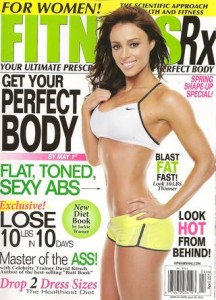
About a year or so ago I wrote an article on glute training that appeared in Fitness Rx for Women magazine. Well, lo and behold, they published the article online for free! The article is called, The Tight and Toned Butt Workout (yeah, I know the title is a bit cheesy, but hey, that’s apparently what sells magazines…). Although the article is geared toward women, it’s a routine that can be used effectively by men too. Check it out.
Book update: Rodale has acquired the mail order rights to my book, The M.A.X. Muscle Plan. In case you don’t know, Rodale is an industry leader in fitness media. They publish Men’s Health Magazine, as well as many other fitness publications. As I’ve mentioned previously, this book was the culmination of many years of of research and practice, and represents the most cutting-edge muscle building program ever developed (and I’m not blowing smoke when I say this!). It’s available at a discount on Amazon.com as well. I hope you’ll give it a read; I’d love to hear your feedback.
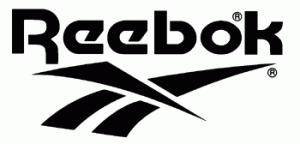 Finally and importantly, I have agreed to a consultant role with Reebok International. In my role, I will be providing educational content for fitness professionals as well as making select appearances at Reebok-sponsored events. There are other as-yet undefined areas that may be explored as well. I am honored to be affiliated with such a terrific brand and look forward to partnering with them to share my fitness expertise.
Finally and importantly, I have agreed to a consultant role with Reebok International. In my role, I will be providing educational content for fitness professionals as well as making select appearances at Reebok-sponsored events. There are other as-yet undefined areas that may be explored as well. I am honored to be affiliated with such a terrific brand and look forward to partnering with them to share my fitness expertise.
Stay Fit!
Brad
April 20, 2013
The Anti-Oxidant Paradox and Its Implications for Interpreting Research

Antioxidant supplements continue to be touted by many fitness professionals as a nutritional panacea. In case you’re not aware, antioxidants are the body’s scavengers. They help to defend against damage caused by reactive oxygen species (ROS) — unstable molecules that can injure healthy cells and tissues — which are produced in abundance each day during the normal course of respiration. The main culprit: oxygen. Every time you breathe, oxygen uptake causes ROS production. Environmental factors such as pollutants, smoke and certain chemicals also contribute to their formation. Their production have been linked to a multitude of ailments including arthritis, cardiovascular disease, dementia and cancer. Not surprisingly, exercise is associated with substantially greater ROS production given that it substantially inreases oxygen consumption. This has led to the supposition that antioxidant supplements are especially beneficial for hardcore exercisers.
Here’s a short-course in how the process works: Your body is made up of billions of cells held together by a series of electronic bonds. These bonds are arranged in pairs so that one electron balances the other. However, in response to various occurrences (such as oxygen consumption), a molecule can lose one of its electron pairs making it an unstable free radical. The free radical then tries to replace its lost electron by stealing one from another molecule. This sets up a chain reaction where the second molecule becomes a free radical and destabilizes a third molecule, which becomes a free radical and destabilizes a fourth molecule and so on.
To prevent rampant ROS production, your body has a sophisticated internal antioxidant system. Various antioxidant enzymes combine with antioxidants from the foods you eat to help keep ROS at bay. There are dozens of known antioxidants including Vitamin C, Vitamin E, coenzyme Q10, alpha-lipoic acid, and carotenoids, amongst others. Although these nutrients are readily obtainable from food sources, it is often postulated that it’s virtually impossible to consume adequate quantities from your daily diet, thus making supplementation mandatory. In theory, supplementing with antioxidants would seemingly make sense since a greater availability should allow for greater protection against ROS. Question is, does theory translate into practice?
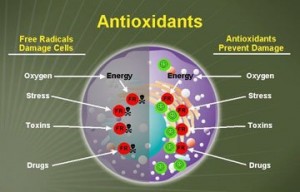
I first became interested about the topic a dozen or so years ago. A friend gave me a book to read called The Antioxidant Miracle, which as the title implies touted the wonders of antioxidant supplementation. The book piqued my curiousity. I delved into the research. Lo and behold, the claims seemed legit. A large number of studies showed positive effects of supplementation on a wide array of health-related benefits. What really caught my attention was a review by Dekkers et al. in the journal Sports Medicine, which discussed favorable results of antioxidant supplements during intense physical activity. The article went on to conclude that “human studies reviewed indicate that antioxidant vitamin supplementation can be recommended to individuals performing regular heavy exercise.” At the time, I wasn’t very savvy as to the complexities of research. I jumped on the antioxidant supplement bandwagon.
My bad.
Fast forward several years. Larger randomized controlled trials were conducted. The findings of these studies were at best decidedly mixed, with a majority showing no health-related benefits from supplementing with antioxidants. Alarmingly, several meta-analyses reported that there may even be an increased supplement-associated risk for cancer, stroke, and all-cause mortality. An objective evaluation of the current literature would make it difficult for even the most ardent antioxidant proponent to make a case for improving well-being by supplementation.
What’s particularly interesting to me as an exercise scientist is emerging research suggesting that antioxidant supplements may actually have a *detrimental* effect on training-related adaptations, particularly those associated with muscle hypertrophy. At issue here is the distinction between chronic versus acute ROS production. Evidence does show that chronically elevated levels of ROS can impair muscle function and even bring about muscle wasting conditions. Understand, however, that exercise upregulates the body’s antioxidant defenses. This ultimately helps to reduce chronic elevations in ROS without the need for supplementation.
On the other hand, acute production of ROS during a workout has been implicated in a variety of exercise-related adaptations including enhanced muscle remodeling. ROS production has been found to promote growth in both smooth muscle and cardiac muscle, lending credence to the supposition that these substances may have similar hypertrophic effects on skeletal muscle as well. The mechanisms have yet to be determined, but studies show that ROS can function as key cellular anabolic signaling molecules in the response to exercise. What’s more, there is evidence that they help to mediate the activity of satellite cells, which are responsible for aiding in repair and regeneration of muscle fibers. I have covered these topics extensively in my recent reviews of the roles of metabolic stress and muscle damage in exercise-induced muscle hypertrophy. By suppressing ROS production, antioxidant supplements may inhibit these hypertrophic effects and thus impair the growth and repair process. Indeed, preliminary studies indicate a negative impact of supplementation on exercise-induced adaptations.

There are a couple of take-home messages here, the most obvious of which is that the risk/reward ratio for antioxidant supplementation appears to be poor. Focus on eating a diet replete in vegetables and fruits and you’ll get all the antioxidants you need to support basic health. Overloading on antioxidants via supplements will not confer any additional benefits; it’s possible they may actually cause harm. And although the jury is still out, it is at least conceivable that supplementation can impede muscular development and other exercise-related adaptations. Any way you slice it, antioxidant supplementation doesn’t seem to make sense, at least for otherwise healthy individuals who exercise on a regular basis.
On a broader scale, the overriding message to be gleaned is the importance of using caution when interpreting research. This is particularly true of exercise-related studies, which are usually limited by small sample sizes, the inability to control for various confounders, and the almost unlimited number of variations that encompass exercise program design. All-too-often fitness professionals are quick to form opinions based on limited evidence. Such an approach is decidedly misguided and unscientific. As illustrated here, I was guilty of falling into this trap. Fortunately I learned from the mistake and as a result became a more astute fitness professional.
Extrapolating research findings in an evidence-based fashion can be equated to solving a jigsaw puzzle. Each published study is a piece to the puzzle. In almost every situation there will be conflicting results between studies. Sometimes two studies will report diametrically opposite findings on the same topic. How can you make sense of all this?
The best fitness professionals, guys like Bret Contreras, Alan Aragon, Joe Dowdell, and James Krieger, will weigh the body of evidence by considering factors such as the type of study (experimental vs. observational), the subjects (animal vs. human), and the setting (in vitro, ex vivo, in vivo, etc). They’ll also take into account numerous other factors including study design, statistical power, generalizability, and the quality of the journal in which the study was published. Only after a thorough analysis of the prevailing body of literature can an educated opinion be formed that guides decision-making and provides the basis for practical recommendations. It’s a skill that can be honed. The more research you read, the better you become at critical thinking, allowing you to piece together the puzzle in question.
One last thing: I frequently hear trainers and even researchers cite a study as “proof” of a given opinion. Not! A single study never “proves” anything. Rather, it simply lends support to a given theory. As noted, some studies carry more weight than others. The greater the strength of evidence, the more support there is for the theory. But theories are not set in stone. Case in point: Until recently, it was taken as gospel that saturated fat and cholesterol caused cardiovascular disease. Every nutrition text, bar none, stated such as fact. Recent research has now challenged these assumptions, however, suggesting that any relationship is far more complex than previously thought. Bottom line is that the more knowledge we acquire, the more we realize just how much more there is to learn.
Always be skeptical. Always be willing to change your opinion based on new information. This is what separates the ordinary practitioners from the elite.
Cheers!
Brad







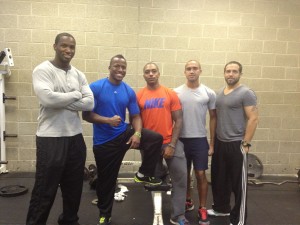

 Entries (RSS)
Entries (RSS)



